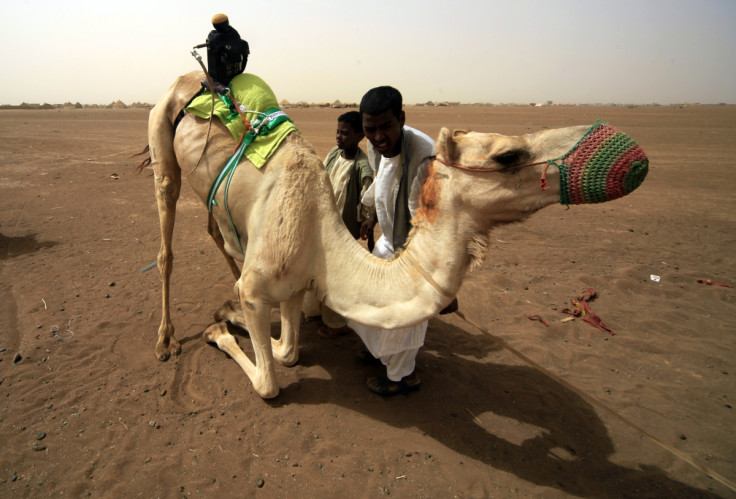World's Most Beautiful Camel Contest Opens in United Arab Emirates [VIDEO]

The Al Dhafra camel contest is a unique beauty pageant, with some claiming it is more popular locally than Miss World, Miss Universe or Miss Earth.
Every year, thousands of people travel from all over the world to attend the Al Dhafra festival in the United Arab Emirates to find the most aesthetically pleasing camel.
Now in its seventh year, the event is not only for camel lovers but also celebrates and promotes Bedouin culture.
Mohammad Khalaf Al Mazroui, chairman of the organising committee of the festival said: "Al Dhafra festival is not just a celebration that repeats itself. It is a solid bridge that memory uses to cross from past to present, inspired by our shining heritage and thriving present.
"The 7th edition carries a lot of fun and benefit for the lovers of Bedouin life, others who are interested in the revival of the Arab civil heritage and those who desire to explore this heritage and its manifestations in the Emirati future vision."
The animal beauty pageant has 25,000 camel contestants this year, in two competitions: one for the light-coloured Asayel breed, the other for the Majahim, a dark-skinned ungulate.
The camels are looked over by experts and judged on a number of criteria include size of the head, height and shape of the hump as well as good behaviour.
The contest is fiercely competitive as around £8.2m in prizes can be won during the 15-day event, and the best camels sell for up to £2m.
"There is a special committee, appointed by the authorities, which judges the competition. They place all the camels together in one pen and decide," camel owner Khamees Mohammad al Sharee told Sky News.
Camels do not directly store water in their humps as was once commonly believed. The humps are actually reservoirs of fatty tissue: concentrating body fat in their humps minimises the insulating effect fat would have if distributed over the rest of their bodies, helping camels survive in hot climates.
The kidneys and intestines of a camel are very efficient at reabsorbing water. Camel urine comes out as a thick syrup, and camel faeces are so dry that they can be used to fuel Bedouin camp fires.
However, the largest population of camels is not in the Middle East but in Australia. There are around 700,000 feral dromedary camels in central parts of Australia, descended from those introduced as a method of transport in the 19th and early 20th centuries.
Watch last year's camel contest at Al Dhafra festival on YouTube, below:
© Copyright IBTimes 2025. All rights reserved.






















